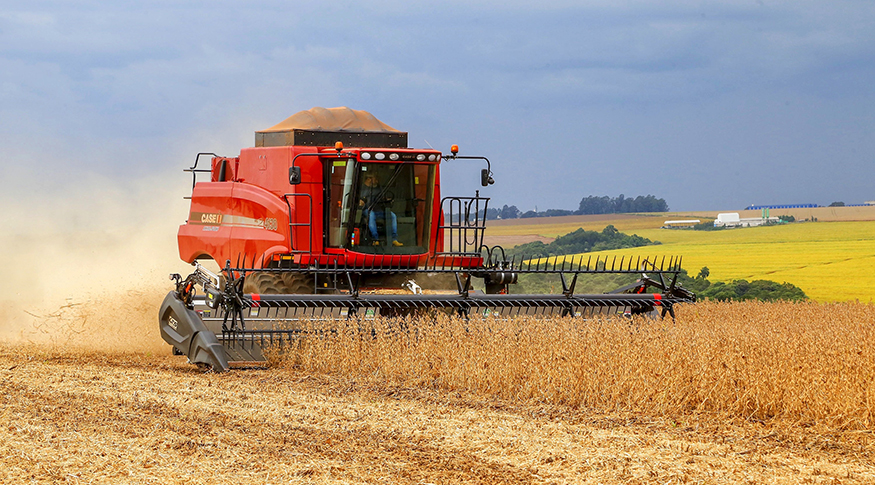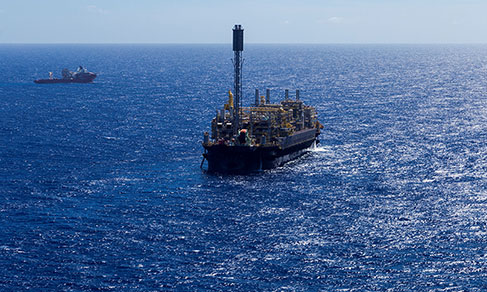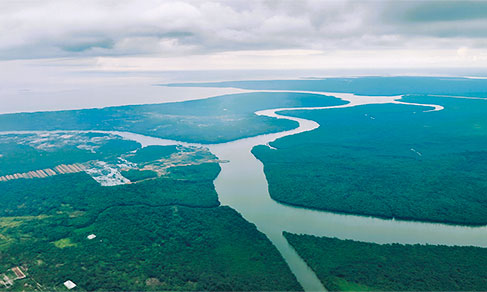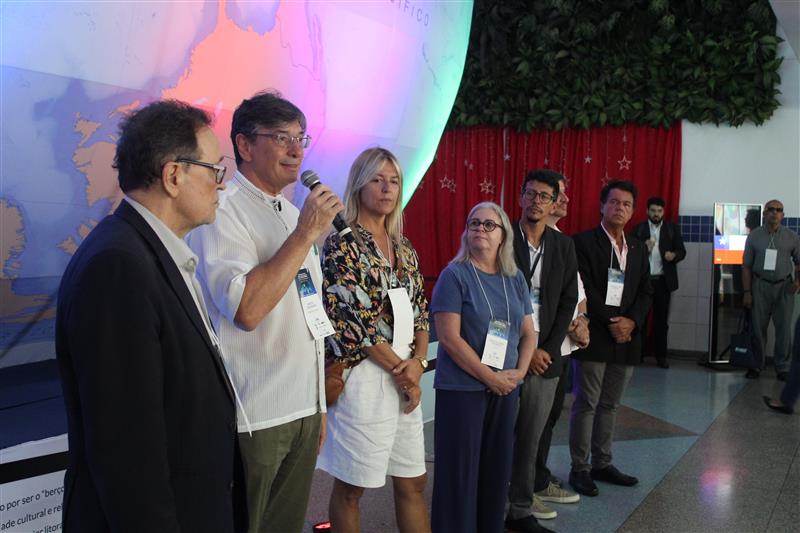Regional Accounts
In 2021, GDP grows in all 27 Federation Units
November 17, 2023 10h00 AM | Last Updated: November 22, 2023 10h57 AM
Highlights
- In 2021, the GDP of the 27 Federation Units (FUs) was positive and the highest rises were in Rio Grande do Sul (9.3%), Tocantins (9.2%) and Roraima (8.4%).
- Six Federation Units exchanged positions between 2020 and 2021. Rio Grande do Sul, which had fallen to the fifth position in 2020, returned to the fourth position in 2021, exchanging positions with Paraná. For the second year in a row, Mato Grosso advanced one more position, to the 11th one, surpassing Pernambuco (12th). Acre also rose one position, to the 25th, and Amapá fell to the 26th position.
- The lowest per capita GDP was in Maranhão (R$17,471.85) and the highest one was in the Federal District (R$92,732.27) or 2.2 times the Brazilian average.
- The five Major Regions grew in volume in 2021 leaded by the South (6.5%), especially due to the performance of Rio Grande do Sul. The Central-West recorded the lowest change (1.9%), due to the negative result of Agriculture.
- The GDP of the Southeast grew 4.8%, the same rate for Brazil, though São Paulo (4.7%) and Rio de Janeiro (4.4%) reported lower rates than the national average. On the other hand, Espírito Santo and Minas Gerais grew 6.0% and 5.7%, respectively.
- The North Region increased 5.2%, and only in Rondônia (4.7%) and in Pará (4.0%) the result was lower than the national average.
- The average change in the Northeast Region was 4.3%. Alagoas registered the highest increase in volume (6.3%) and Pernambuco recorded the lowest rate (3.0%).
- For the fifth year in a row, compensation of employed persons lost share in the Brazilian GDP under the point of view of income, reaching 39.2%. It was the first time in the time series, started in 2010, that this proportion was lower than 40% of the GDP.
- The share of compensation of employed persons in the GDP retreated in all the Major Regions, and the most intense drop was in the Central-West, where this share declined from 43.8% in 2020 to 40.4% in 2021.

After dropping in 2020 mainly due to the effects of the COVID-19 pandemic, The Brazilian Gross Domestic Product (GDP) hit R$9 trillion in 2021, an increase of 4.8% in volume. Among the the three groups of activities, Agriculture remained stable in volume (4.2% in 2020), whereas Industry grew 5.0% (-3.0% in 2020) and Services, 4.8% (-3.7% in 2020).
All the 27 Federation Units grew in volume of GDP: Rio Grande do Sul registered the highest change (9.3%), followed by Tocantins (9.2%) and Roraima (8.4%). These pieces of information come from the Regional Accounts 2021, produced by the IBGE in partnership with State Statistical Organizations, State Government Secretariats and the Superintendence of the Manaus Free Trade Zone (SUFRAMA).
“Two states of the South Region and three states of the North Region are ranked in the first five positions. On the other hand, the three states that grew less are from the Central-West,” highlights Alessandra Poça, IBGE manager of Regional Accounts.
In 14 FUs, the positive results were above the national average
In 14 FUs, the positive results were above the national average (4.8%). “These 14 FUs represent 30% of the GDP and grew, on average, 6.8%,” analyzes the manager. The highest increases in volume occurred in Rio Grande do Sul (9.3%), Tocantins (9.2%), Roraima (8.4%), Santa Catarina (6.8%) and Acre (6.7%). Agriculture, especially soybeans cropping, contributed to the result of 2021 in these states, except for Santa Catarina, in which this activity changed 0.5%.
Besides Agriculture, the result of Manufacturing industries influenced the performance in Rio Grande do Sul, especially the manufacture of machinery and equipment. In Tocantins, Construction contributed with a growth of 22.6% as well. In Roraima and Acre, the activities of Construction, Trade and repair of motor vehicles and motorcycles and Administration, defense, public health and education, and social security also contributed to the result of 2021.
In Santa Catarina, the fourth highest change in volume of the GDP, the result was due to the performance of Manufacturing industries, mainly manufacture of wearing apparel and accessories, manufacture of machinery and equipment and manufacture of pieces and accessories for motor vehicles.
The other 13 FUs grew below the average: Ceará, Rondônia, São Paulo, Rio de Janeiro, Sergipe, Pará, Paraná, Bahia, Federal District, Pernambuco, Goiás, Mato Grosso do Sul and Mato Grosso. The three states of the Central-West Region had their results influenced by the negative result in volume of Agriculture. “Yet, the growth in volume of services offset the strong drop in volume of Agriculture in 2021,” clarifies Poça.
All the five Major Regions rose their GDPs
All the five Major Regions grew in volume in 2021. The South Region registered the highest change (6.5%), due to the performance of Rio Grande do Sul. The Central-West Region recorded the lowest change, due to the weak performances in Agriculture of Mato Grosso, Mato Grosso do Sul and Goiás, which ranked in the last three positions in terms of growth in volume.
In the Southeast Region, the rise in volume was of 4.8%, the same rate registered in Brazil, being the rises in São Paulo (4.7%) and Rio de Janeiro (4.4%) lower than the national average, whereas Espírito Santo and Minas Gerais grew 6.0% and 5.7%, respectively. The North Region increased 5.2%, and only in Rondônia (4.7%) and in Pará (4.0%) the result was lower than the national average. The average change in the Northeast was of 4.3%, with Alagoas recording the best performance in terms of increase in volume (6.3%), whereas Pernambuco reported the lowest rate (3.0%).
Southeast and South were the only regions to gain share in the Brazilian GDP
Between 2020 and 2021, the Southeast (0.4 pp) and the South Region (0.1 pp) increased their share in the GDP, whereas the Northeast (0.4 pp) and Central-West regions (0.1 pp) reduced it and the North Region maintained its share.
In the Southeast Region, Minas Gerais, Espírito Santo and Rio de Janeiro gained share in the period, due to the increase in the price of mining and quarrying industries. On the other hand, São Paulo lost 1.0 pp, influenced by Financial activities, insurance and related services, as well as by Agriculture and Administration, defense, public health and education, and social security.
In the South, the gains of Rio Grande do Sul (0.3 pp) and Santa Catarina (0.2 pp) accounted for the advance in the region, as Paraná lost 0.3 pp between 2020 and 2021.
The lost of weight of the Northeast was due to the retreat in the share of eight out of nine states in the region, except for Alagoas, which increased its share in the period. Only the share of Bahia retreated 0.1 pp; in the other states, the differences of weight in the period were not sufficient to decline their shares by a decimal place.
In contrast, the loss of share of the Central-West Region was due to the loss of the Federal District (0.3 pp), since Mato Grosso and Goiás increased their shares (0.3 pp and 0.1 pp, respectively).
The North Region maintained its share at 6.3% in relation to the Brazilian GDP and only Rondônia and Pará oscillated. Rondônia lost 0.1 pp and Pará gained 0.1 pp, whose performance was favored by the increase in the price of iron ore.
Six FUs exchanged positions; Mato Grosso rises in the ranking for the second year
In terms of relative positions, six FUs exchanged positions between 2020 and 2021. Rio Grande do Sul, which had fallen to the fifth position in 2020, returned to the fourth position in 2021, exchanging positions with Paraná. For the second year in a row, Mato Grosso advanced one more position, due once again to the gain relative to Agriculture. It advanced to the 11th position, surpassing Pernambuco, which fell to the 12th position. Acre also rose one position, to the 25th, whereas Amapá fell to the 26th position.

Tocantins stands out in the 2002-2021 time series with the highest average change in the year
Between 2002 and 2021, the Brazilian GDP in volume increased, on average, 2.1% per year (p.y.). The greatest highlight was Tocantins, which changed, on average, 4.7% p.y., followed by Mato Grosso (4.5% p.y.), Roraima (4.2% p.y.), Piauí (3.5% p.y.) and Maranhão (3.4% p.y.).
Rio Grande do Sul and Rio de Janeiro remained as the two FUs with the lowest average increases in the time series (1.6% p.y. and 1.3% p.y., respectively).
“In the cumulative index in the time series, 18 FUs grew above the average, especially in the North and Central-West regions and in some states in the Northeast, like Paraíba and Alagoas, Espírito Santo in the Southeast and Santa Catarina in the South. The other states grew below the Brazilian average,” highlights the manager.
In terms of share in the GDP along the time series, the Central-West and North regions recorded the highest relative gains between 2002 and 2021, with advances of 1.7 pp and 1.6 pp, respectively. The only region to lose share in the time series was the Southeast (5.1 pp), whereas the gain of 1.1 pp of weight of the South Region guaranteed a percentage of 17.3%, its biggest share since the beginning of the time series in 2002.
Per capita GDP of the Federal District reaches R$92.7 thousand, 2.2 times above the national figure
The per capita GDP in Brazil was R$42,247.52 in 2021, having increased 17.6% in value over 2020 (R$35,935.74). The Federal District remained as the highest per capita GDP in Brazil (R$92,732.27), 2.2 times the Brazilian per capita GDP. With a per capita GDP of R$65,426.10, Mato Grosso ranked in the second position, followed by Santa Catarina (R$58,400.55).
Only Federation Units in the Southeast, South and Central-West appeared among the 10 highest per capita GDPs in Brazil. Besides the first position of the Federal District, Mato Grosso in the Central-West moved from the 11th position to the second one between 2002 and 2021. Mato Grosso do Sul ranked in the seventh position in 2021, advancing one position over 2002, whereas Goiás fell from the 10th to the 11th position in the same period.
For the first time in the time series, São Paulo in the Southeast Region did not rank in the second position, reaching the fourth position in 2021. Having started the time series in the third position, Rio de Janeiro appeared in the fifth position in 2021, after hitting its lowest level in 2020 (sixth position). Espírito Santo and Minas Gerais ranked in the ninth and tenth positions in 2021, respectively.
Share of compensation of employed persons retreats in all the regions
In 2010, the System of Regional Accounts began to incorporate the GDP estimate under the point of view of income. It allowed the analysis of the distribution of earnings generated in the productive process in each Federation Unit. In 2021, fifth consecutive year of drop in the share, the compensation of employed persons was equivalent to 39.2% of the Brazilian GDP. It was the first time since the beginning of the time series of the indicator, in 2010, that those earnings hit a level below 40% of the Brazilian GDP.
Since 2020, the gross operating surplus and the gross mixed income, together, are the major component of the GDP under the point of view of income, surpassing the compensation of employed persons as a proportion. This surplus is the return on capital of companies, whereas the mixed income has mixed labor earnings and the capital of self-employed persons. In 2021, this sum represented 45.3% of the GDP under the point of view of income, an increase of 1.7 pp over the previous year. On the other hand, taxes on production and imports, net of subsidies, which also comprise the GDP under this point of view, advanced 1.0 pp in share in the same comparison, hitting 15.5%.
The lost in the share of compensation of employed persons in the GDP was reported in all the Brazilian regions, highlighted by the Central-West, in which this share retreated from 43.8% in 2020 to 40.4% in 2021, due to the increase in the prices of major agricultural commodities produced in Mato Grosso, Mato Grosso do Sul and Goiás and to the increase of the influence of agriculture in the region.
The highest percentages of this component of the GDP in the states were in the Federal District (57.6%), Amapá (53.1%) and Roraima (50%). It is explained by the biggest share of the activity of Administration, defense, public health and education, and social security in the economies of those localities.
In contrast, the smallest shares were in Mato Grosso (27.0%) and Pará (28.9%), due to the presence of more capital intensive activities, like agriculture in Mato Grosso and extraction of iron ore in Pará.




















